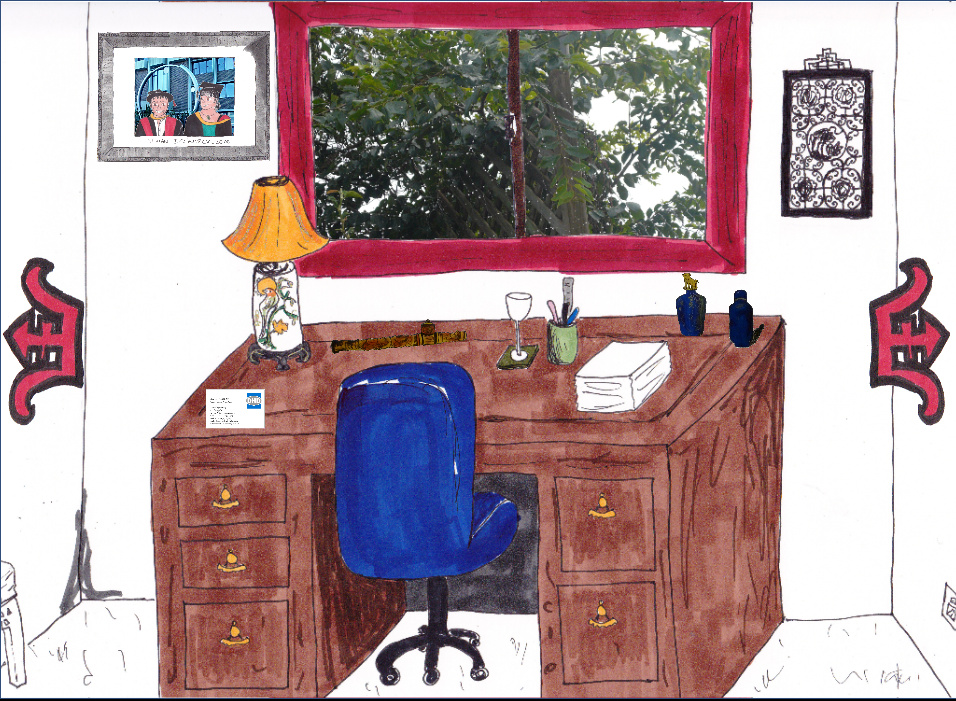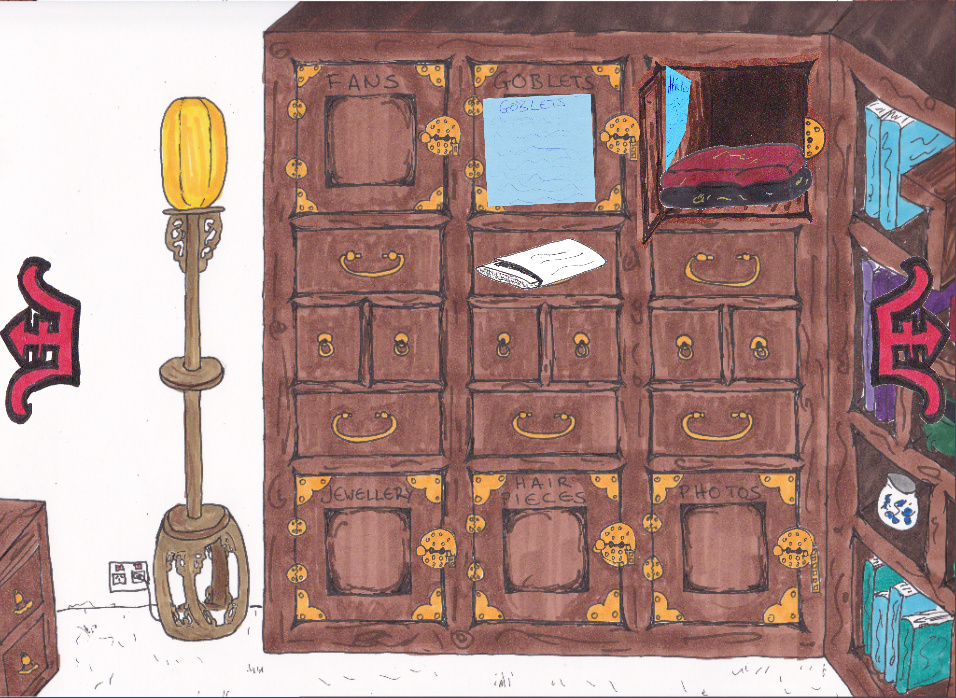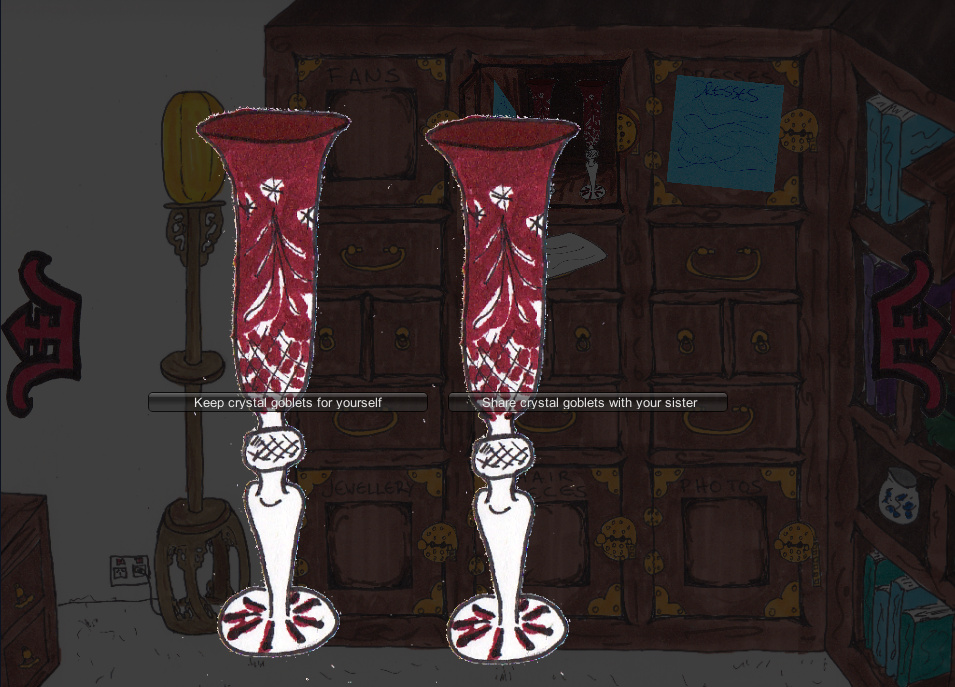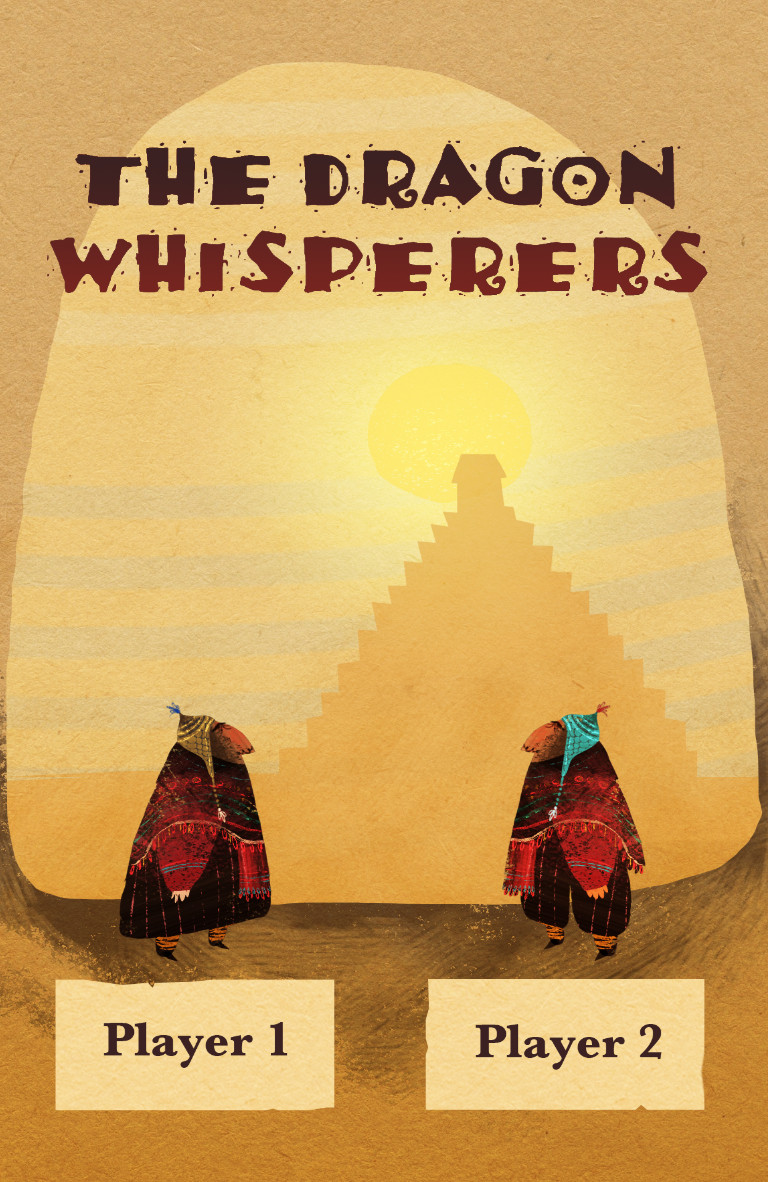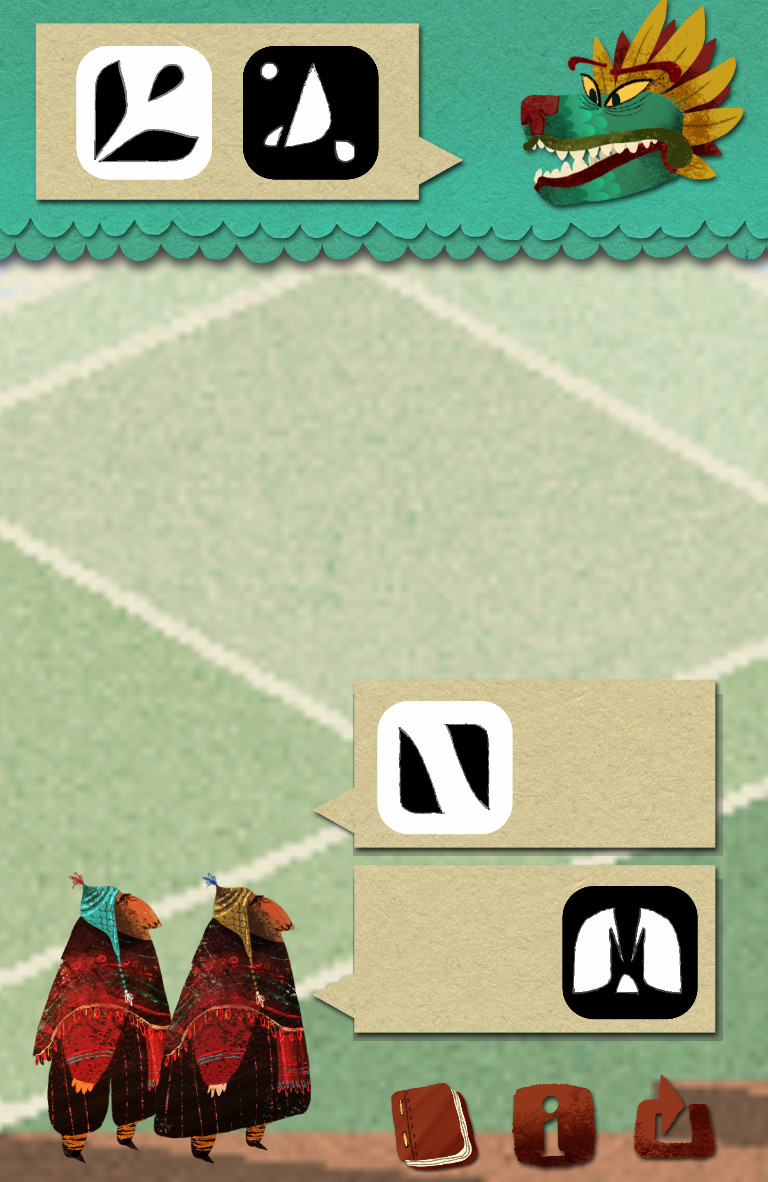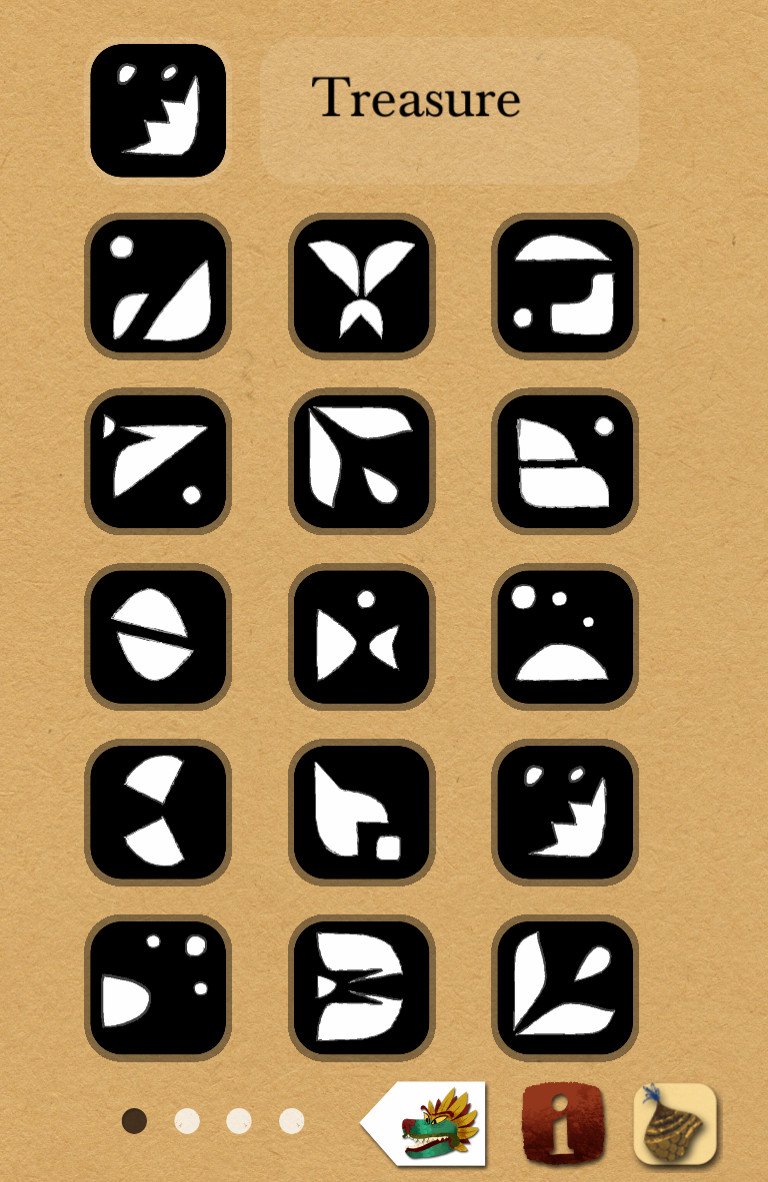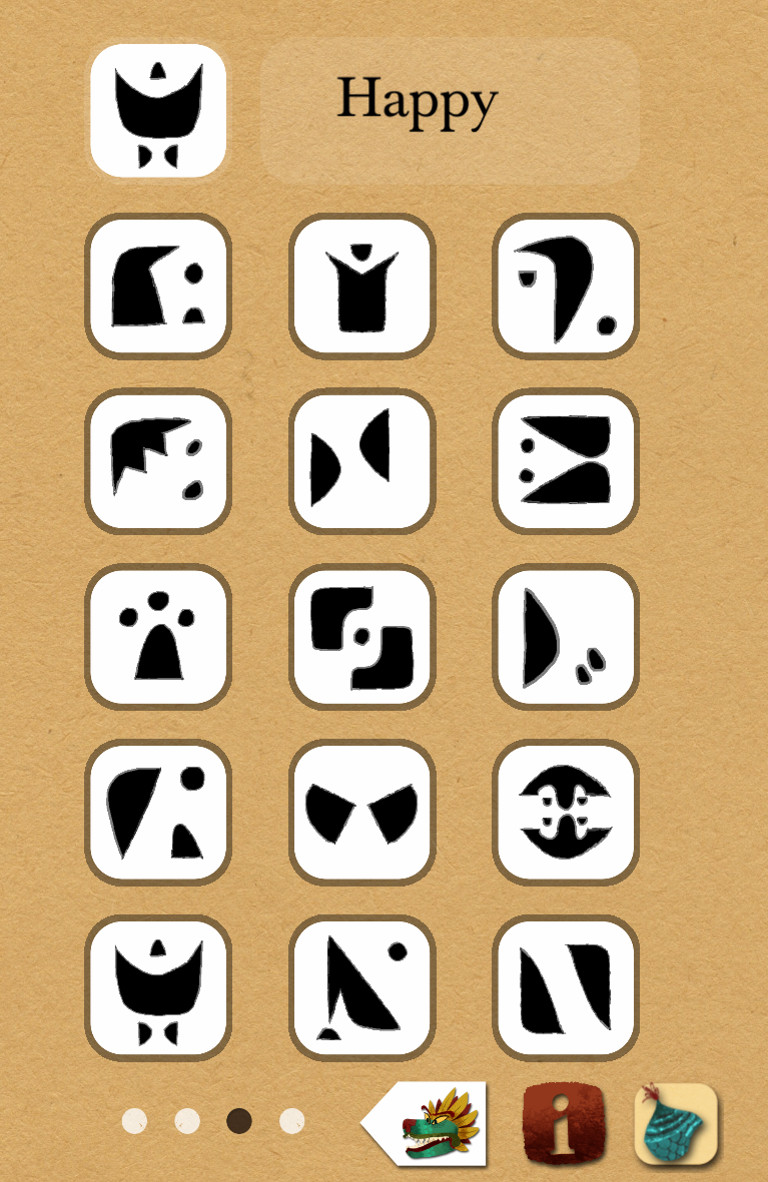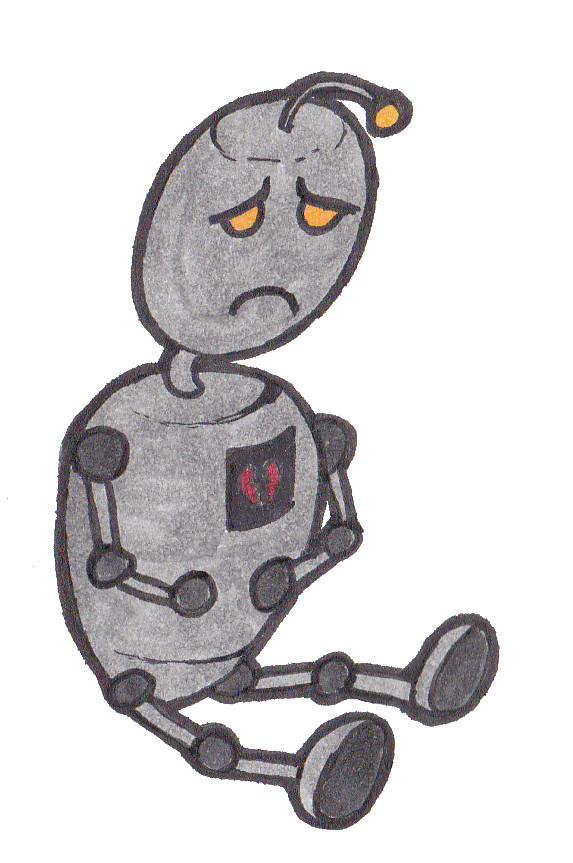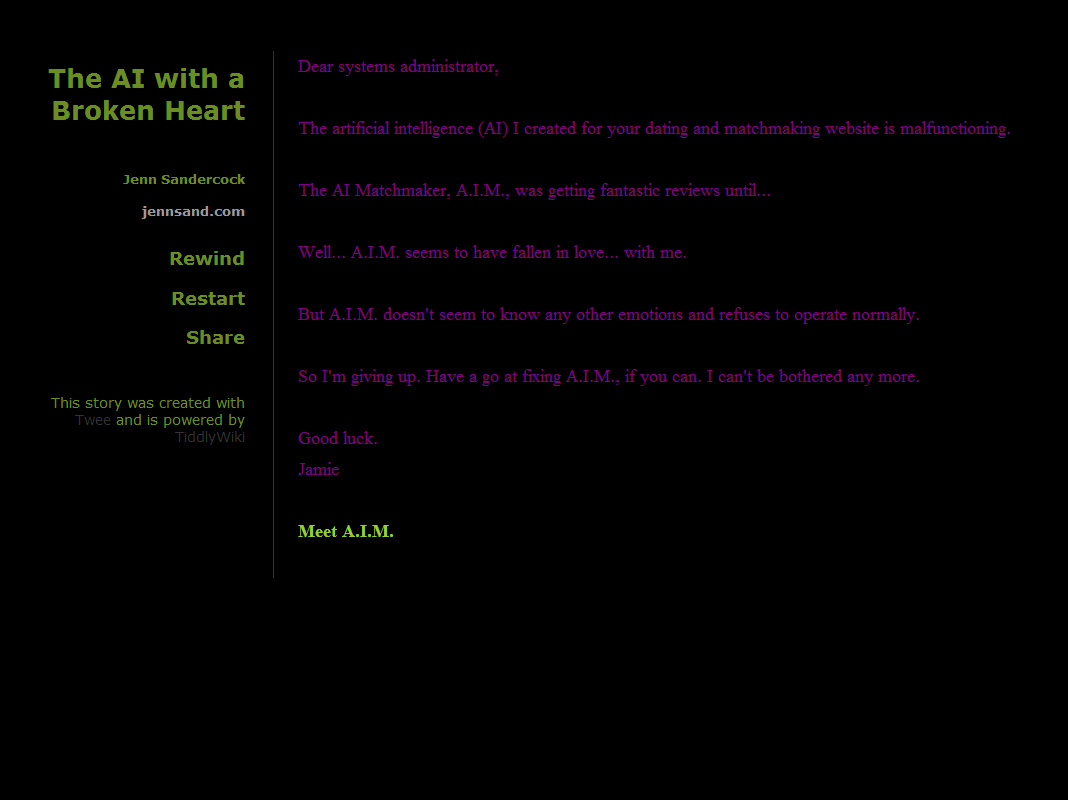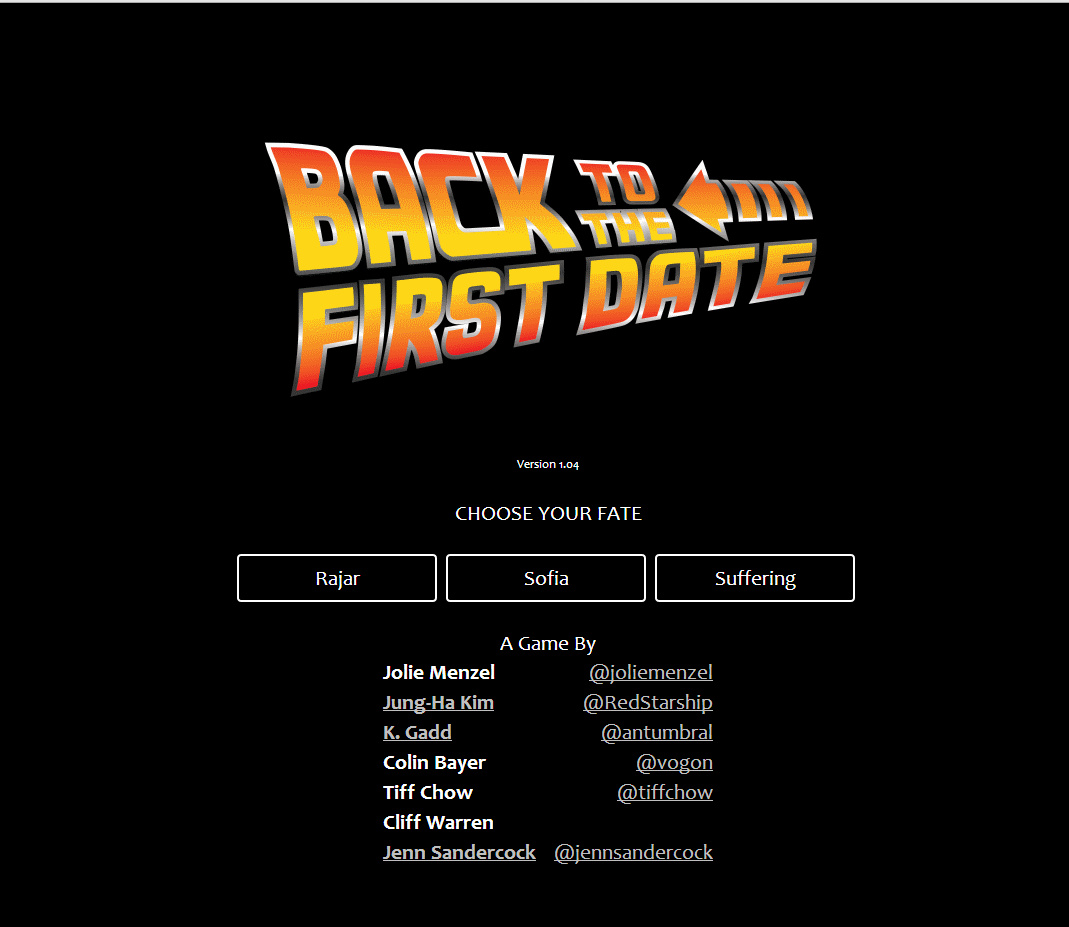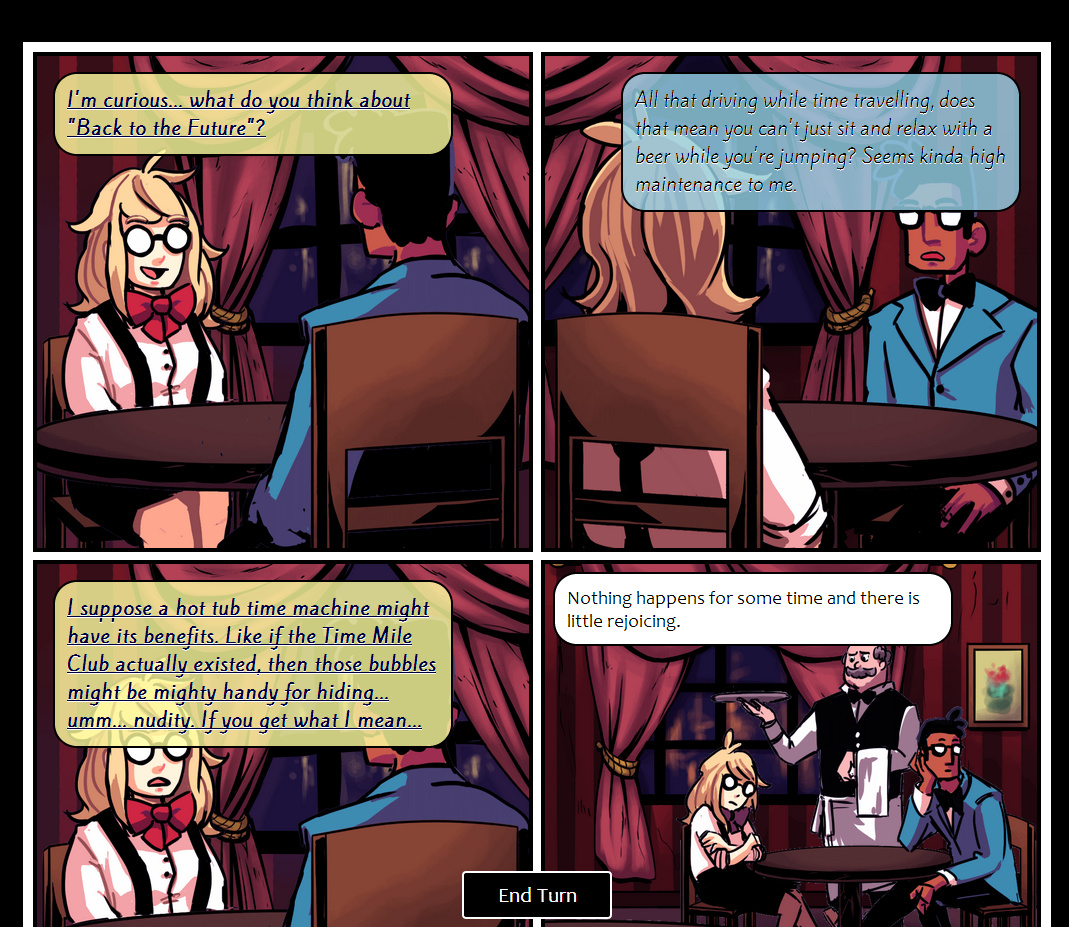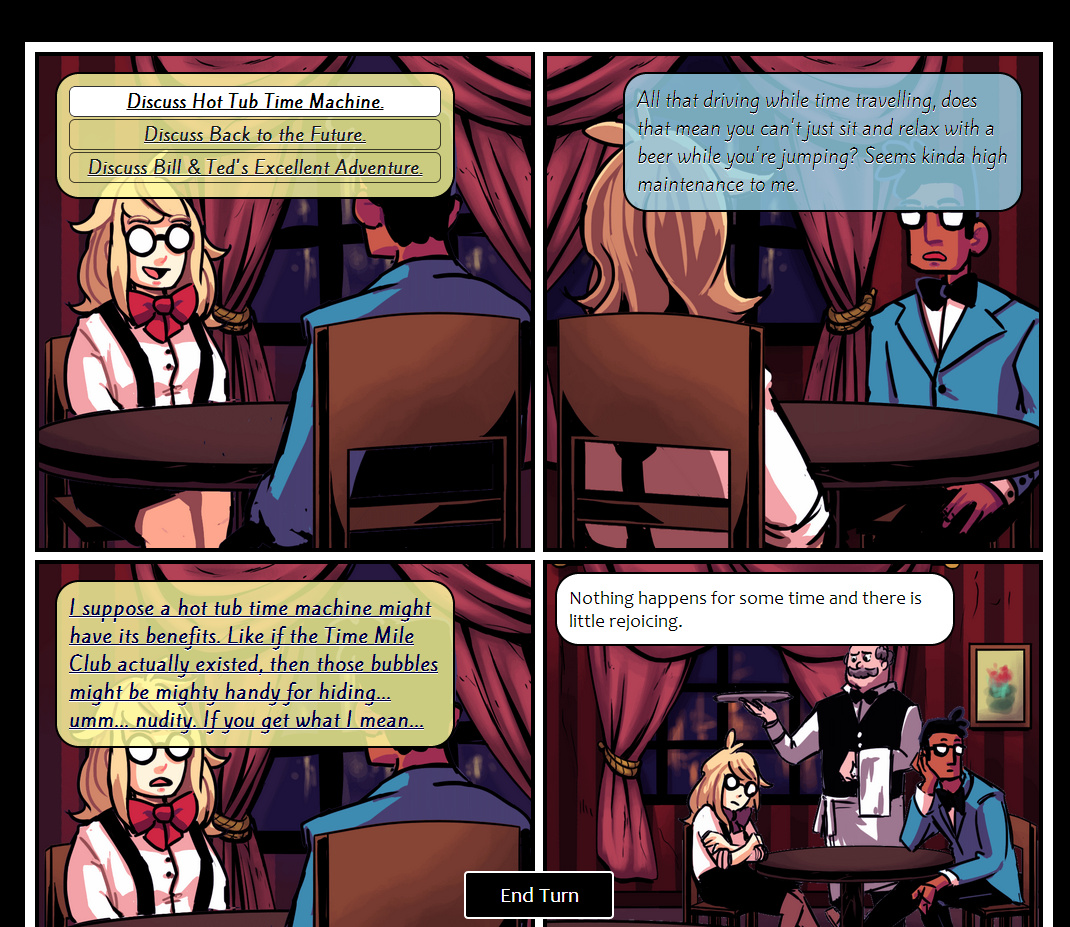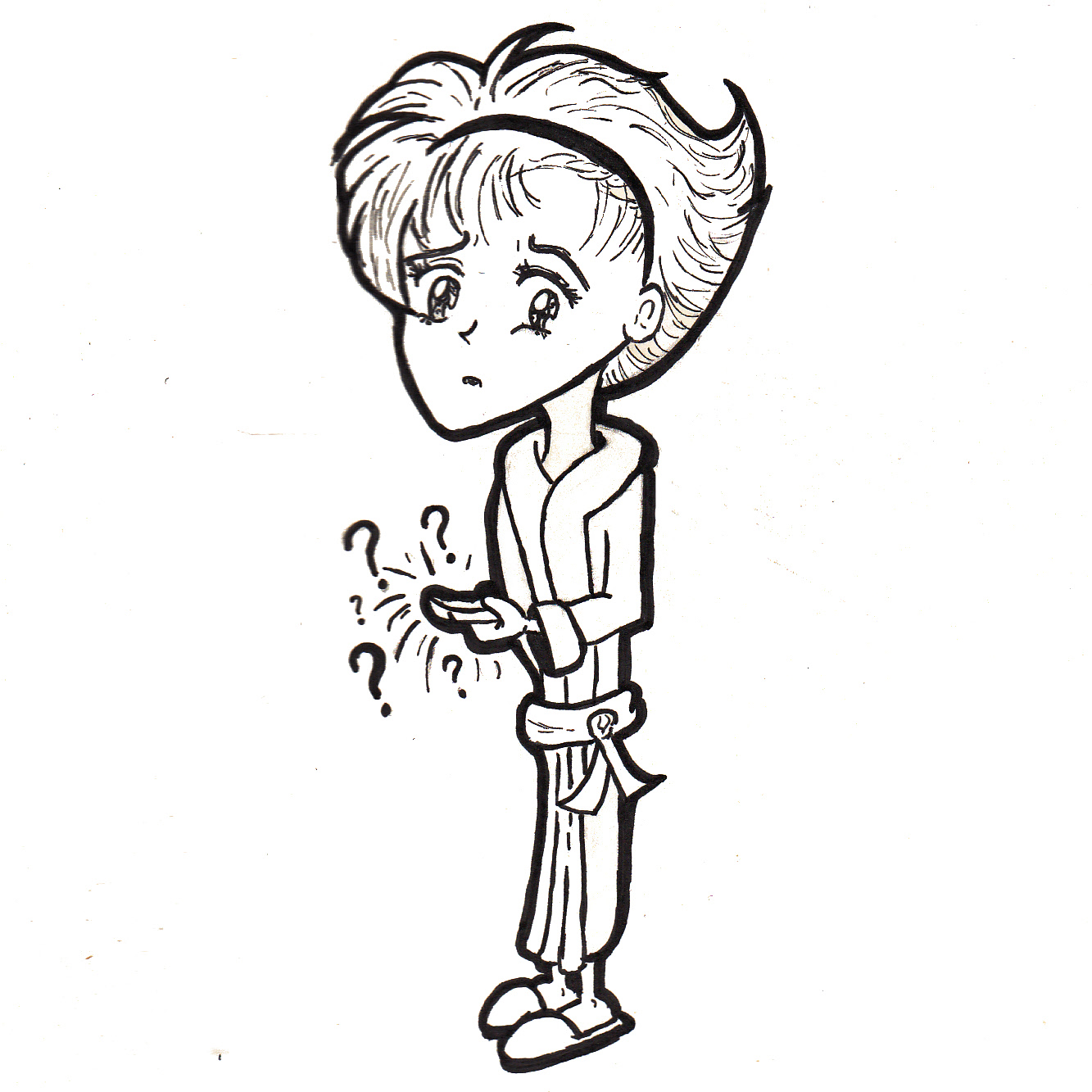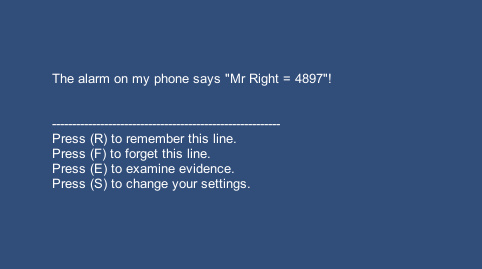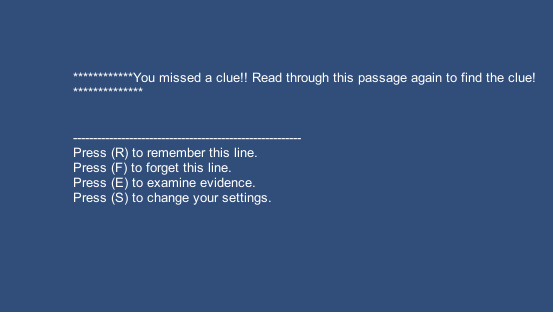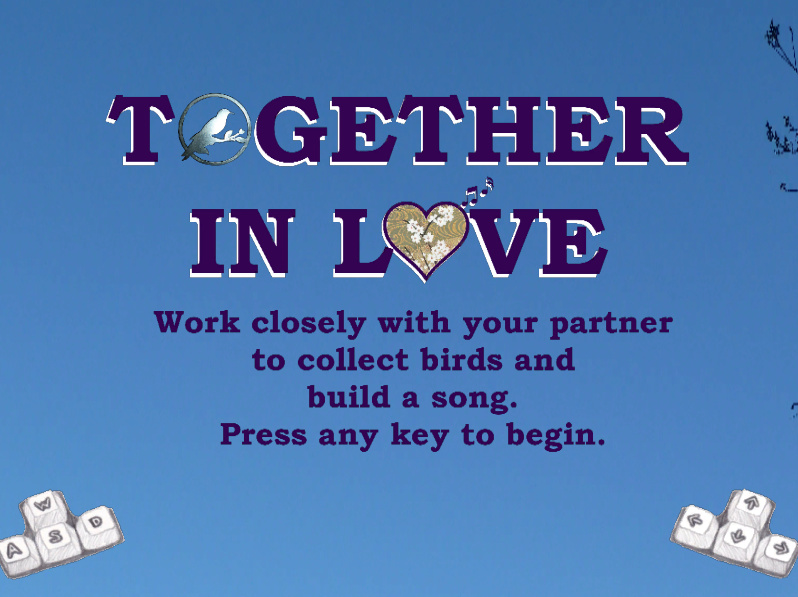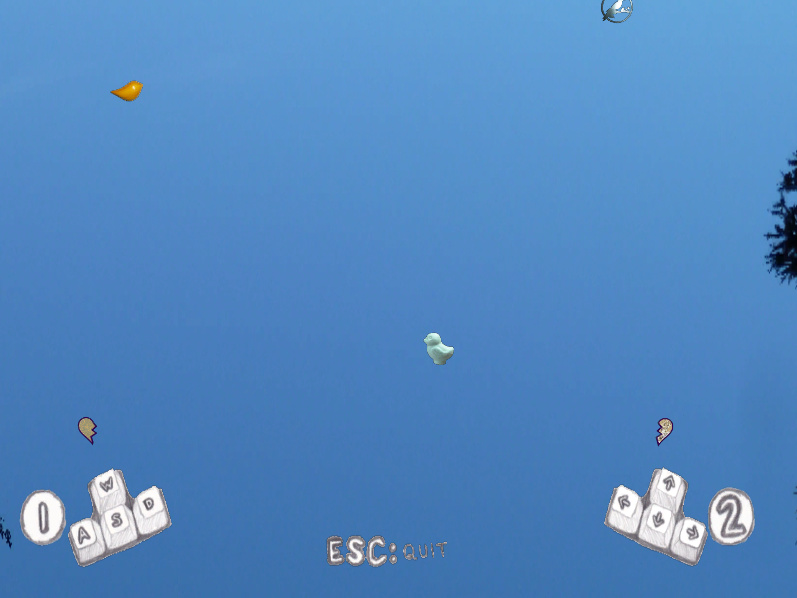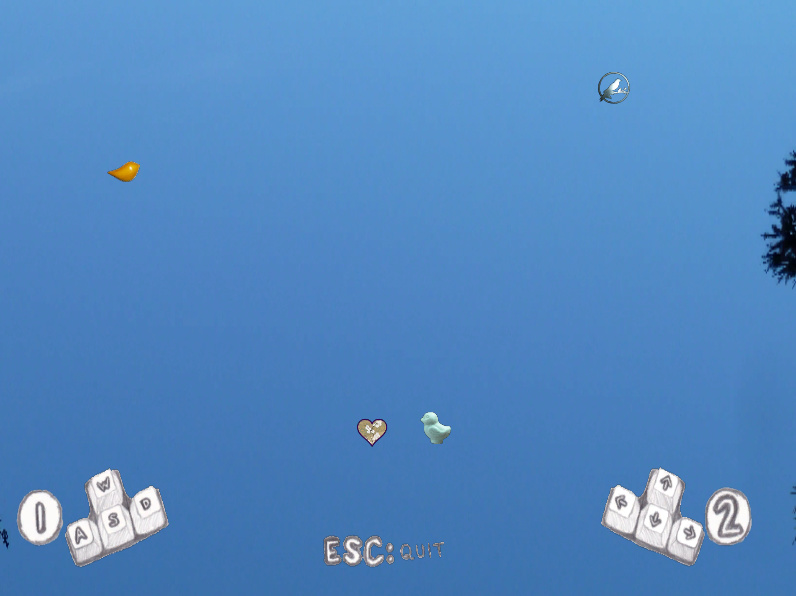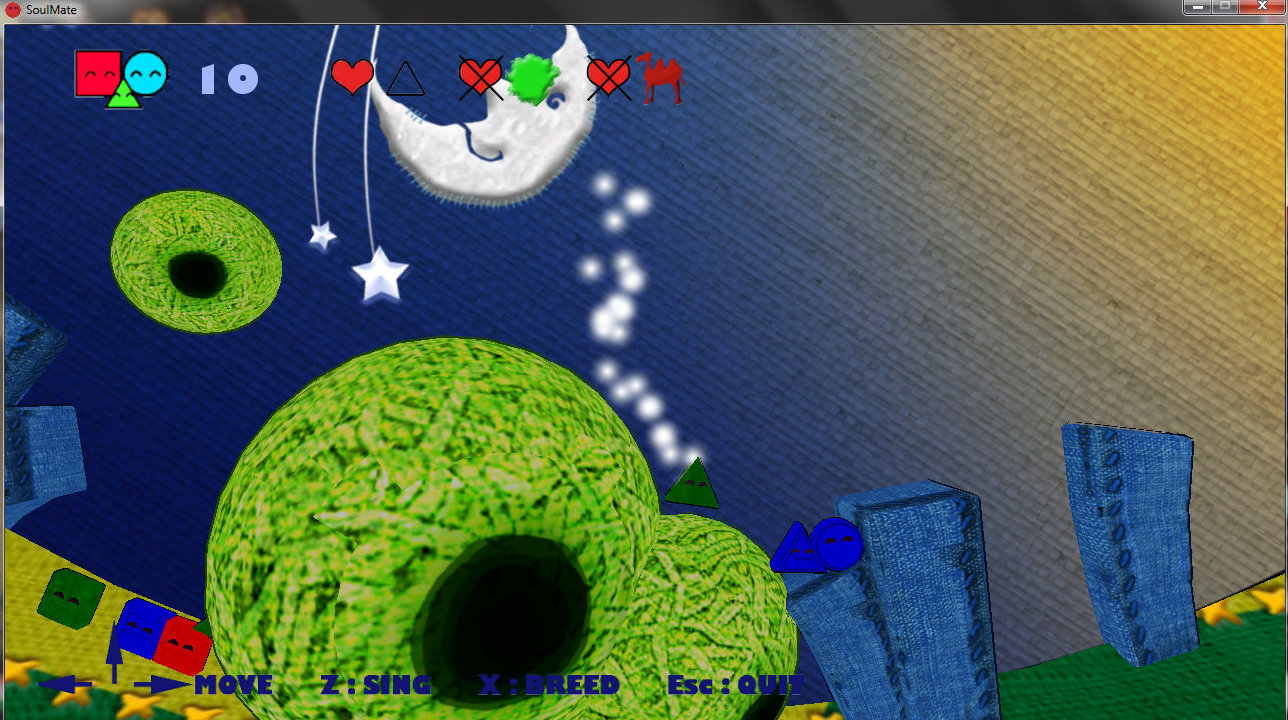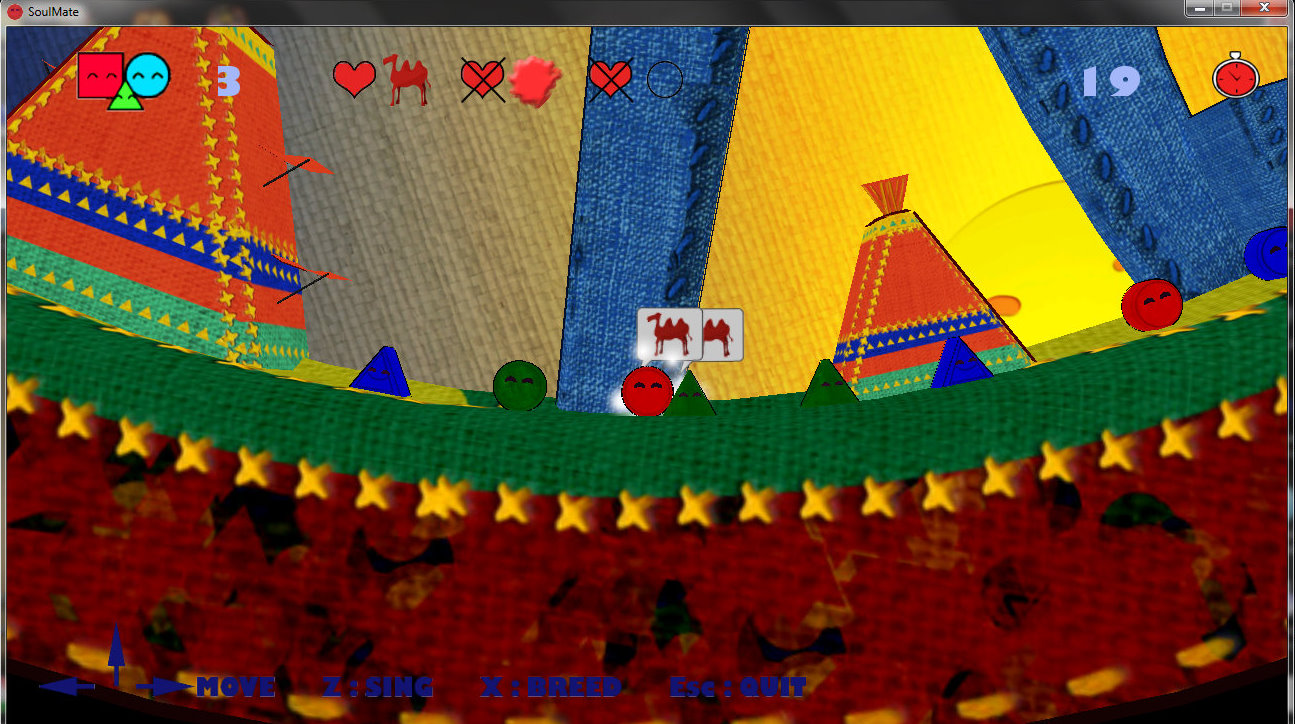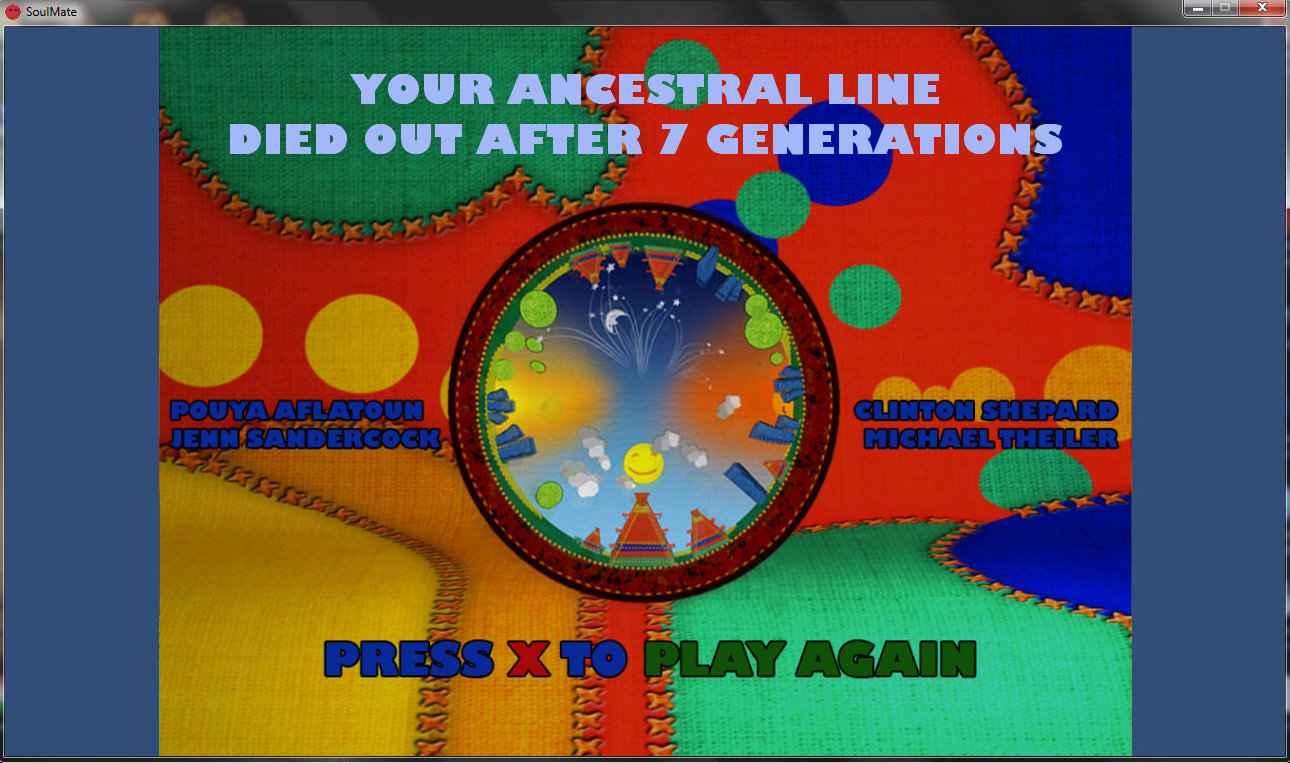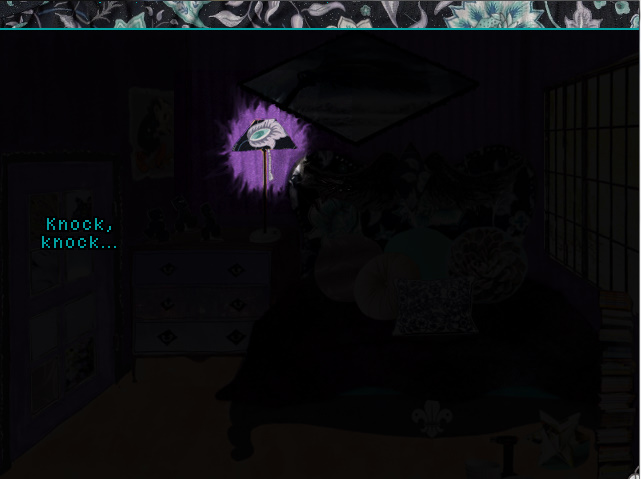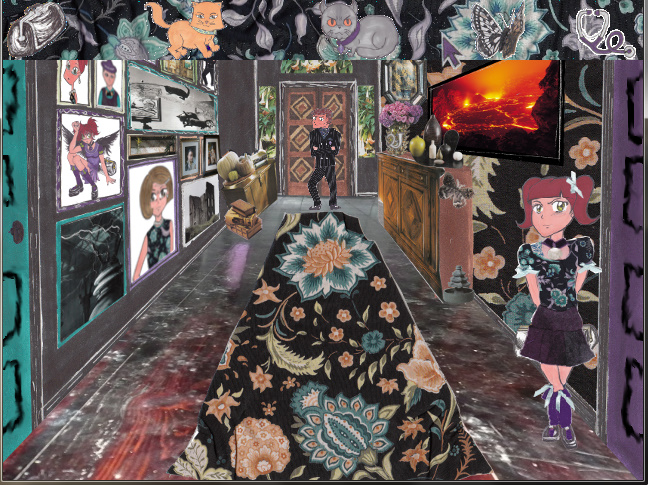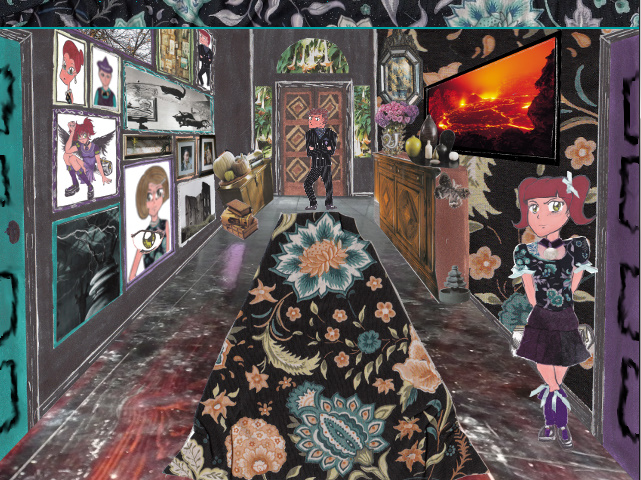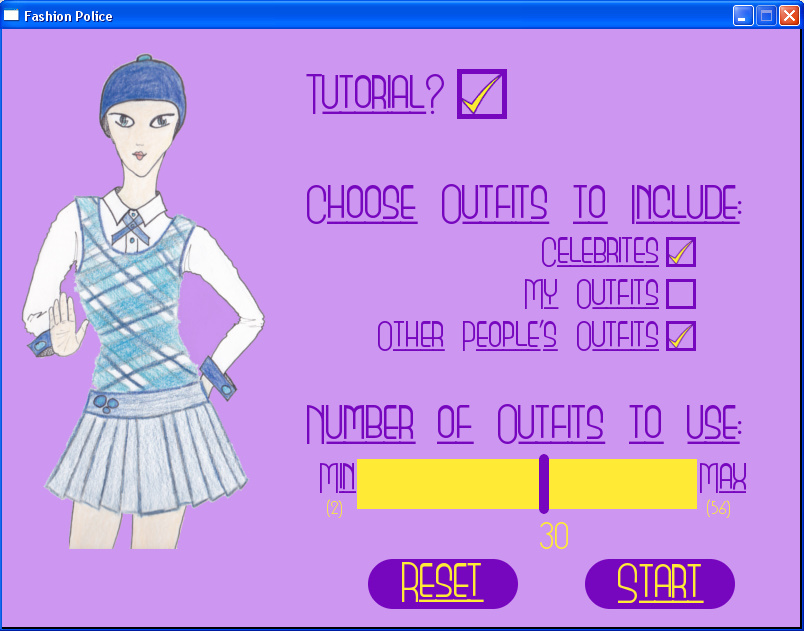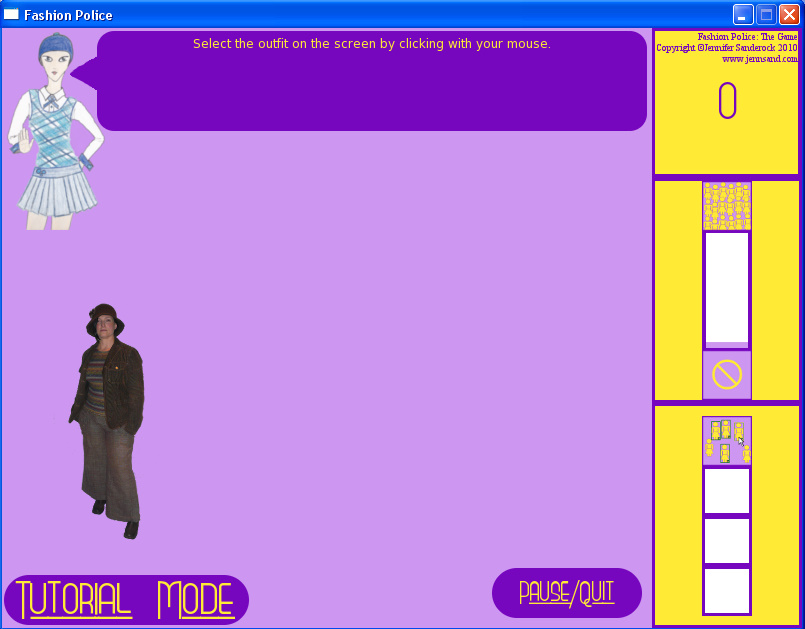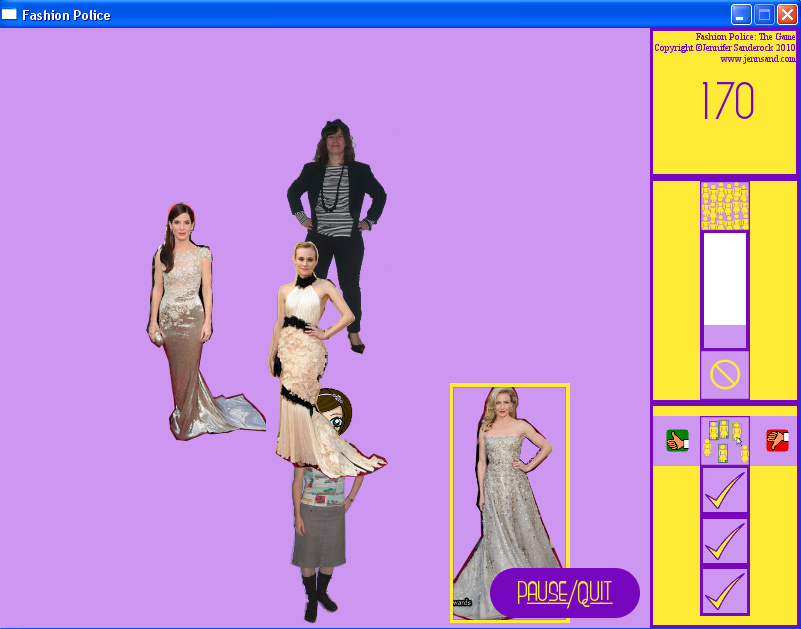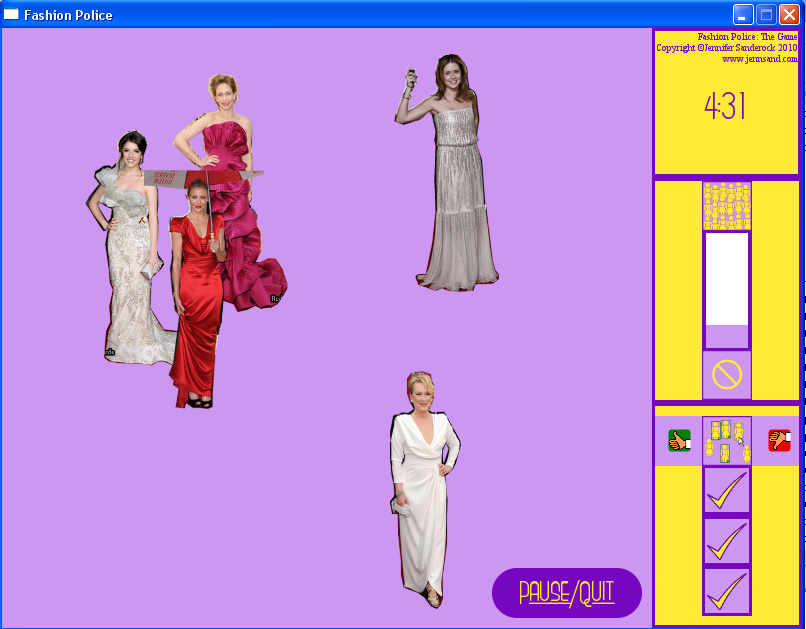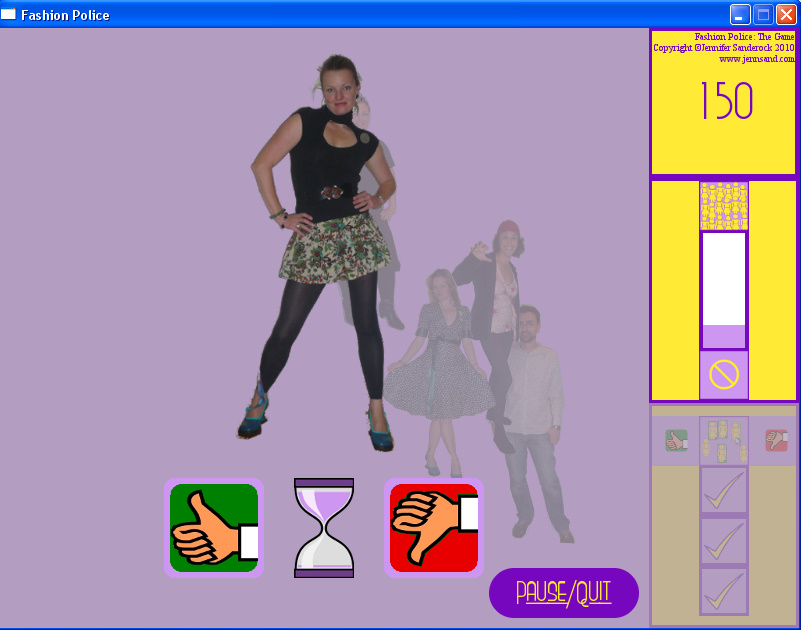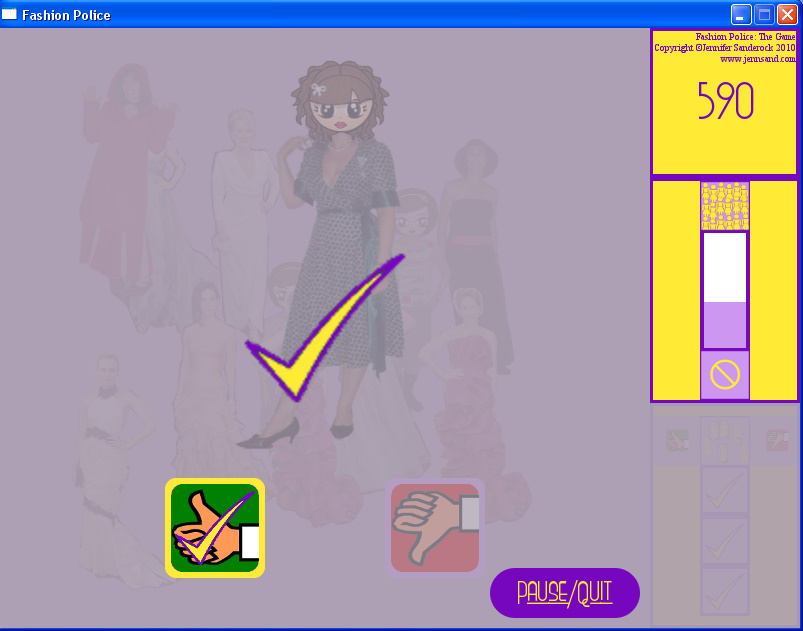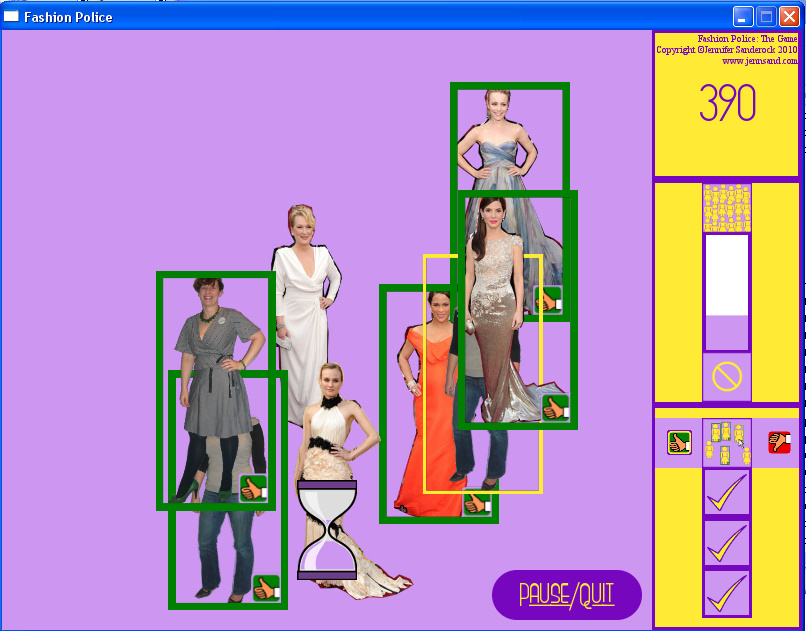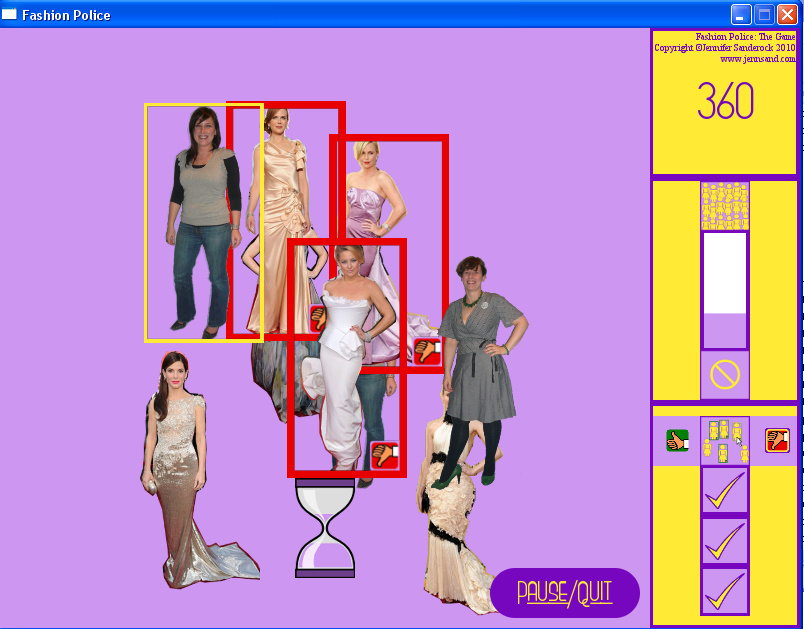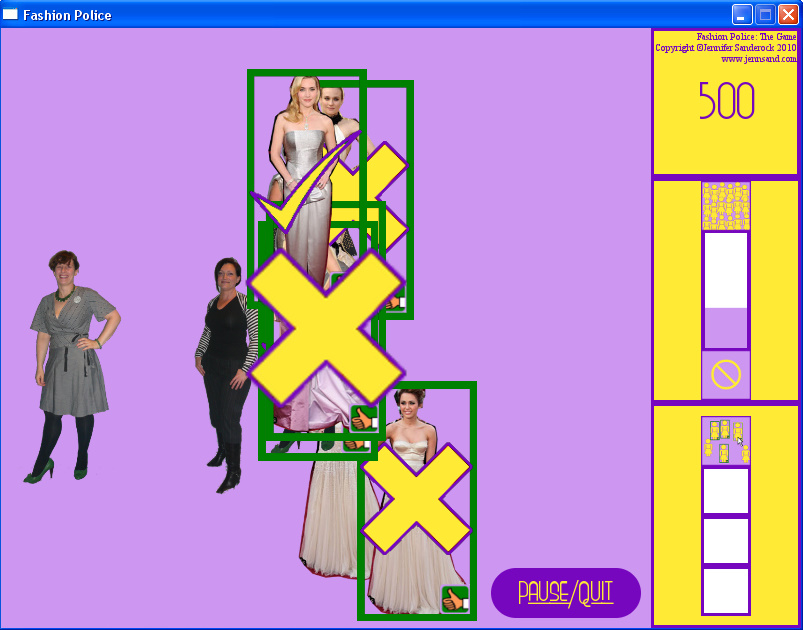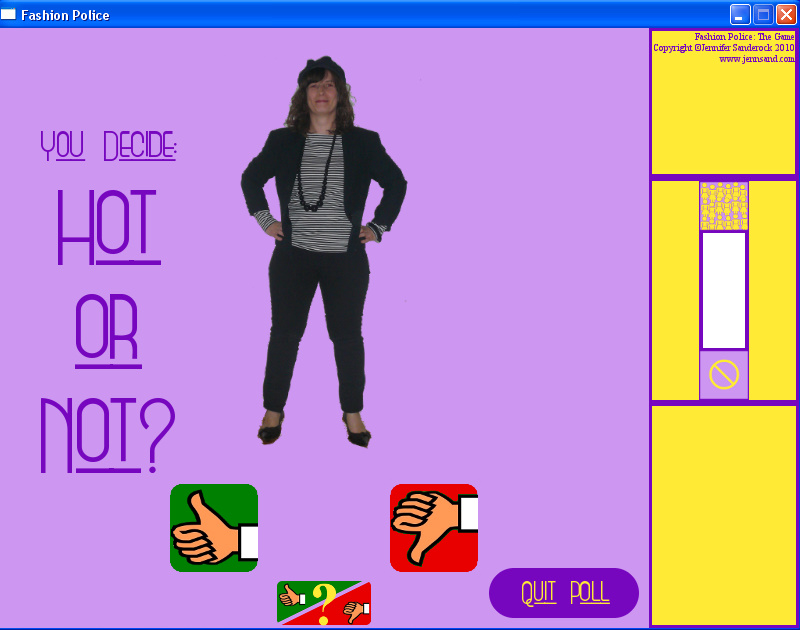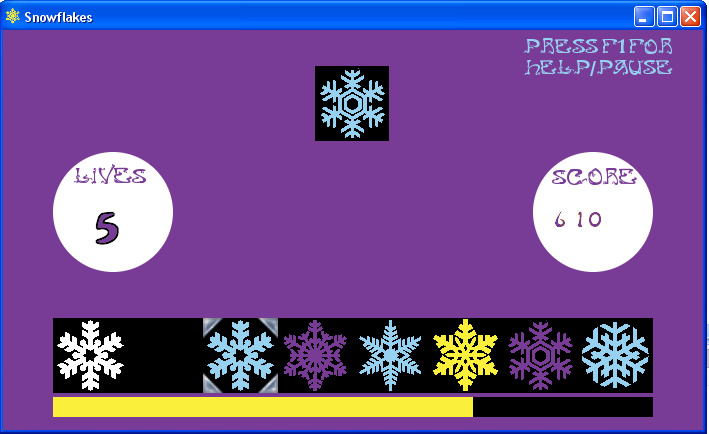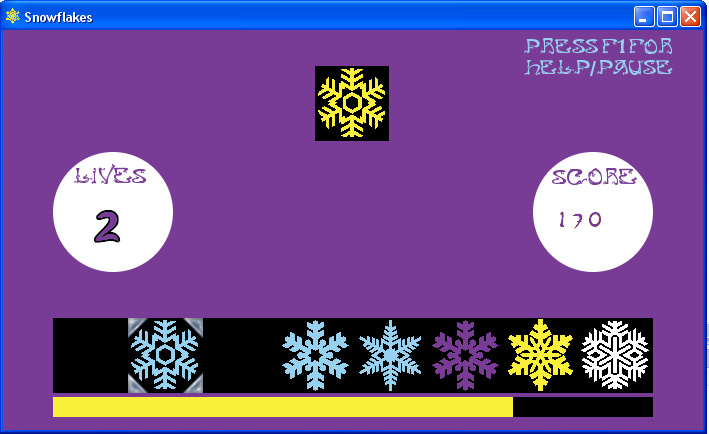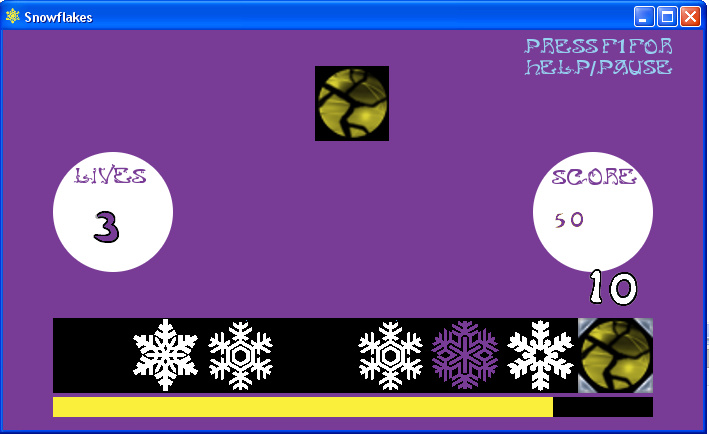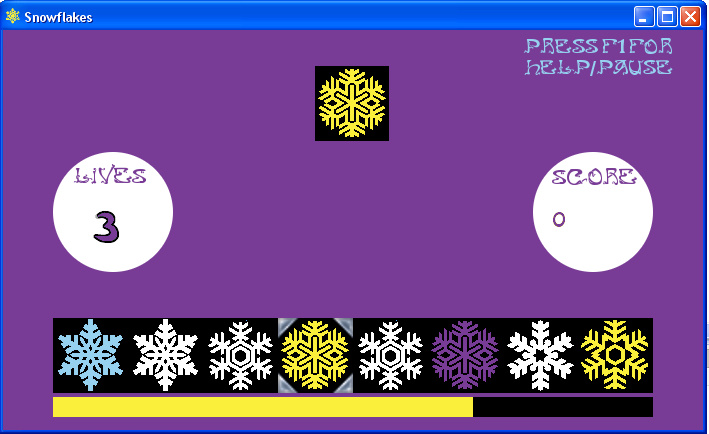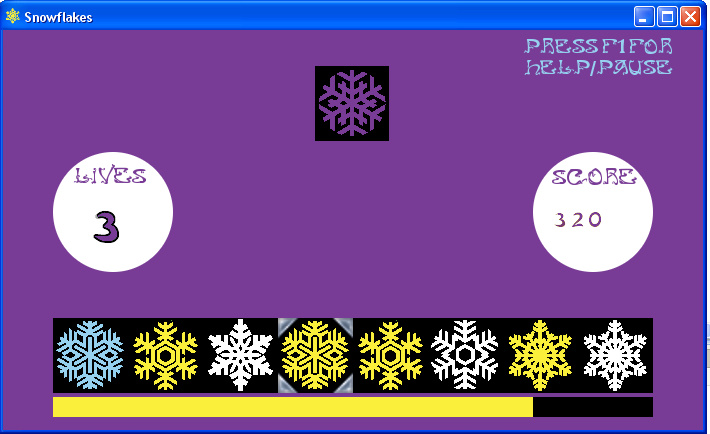Welcome to my non-commerical digital games page...
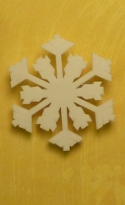
This page describes finished, implemented and independently published digital games I have contributed to. These games are all non-commercial, personal projects. If the game is downloadable, this page will contain those links so you can play the games yourself and sometimes download the source code.
This page is an archive of historical projects I've worked on. For a list of other games I've been involved with, please see the full list on the about page, or a highlights list on the games page of my new website.
|
You and your sibling must save your mother's life by travelling to the top of a temple guarded by a dragon. The dragon asks questions in pictograms and if you want to be understood you'll need to reply in pictograms. Luckily you have a dragon dictionary! Unfortunately you only have half of the dictionary. Your sibling has the other half!
|
||
| |
||
|
Imogen 5000 is a bored AI alarm system that has caught you sneaking in to the mansion she protects. Instead of handing you over to the police, she decides to play a game with you. She turns out all the lights in the mansion and tells you clues about the other rooms in the house that you can get to. Navigate rooms by entering the first letter of a neighbouring room you want to go to and try to find the jewels and the exit before the police arrive. |
|
| |
|
|
You play as a young woman named Marie. You and your housemates had a dinner party last night and you can't seem to remember everything that happened. You have an enigmatic phone message about Mr Right and it seems that Mr Right might not be your boyfriend! Talk to your housemates to find out who Mr Right is and listen to their opinions about your love life. Choose whether or not to listen to your friends, follow your heart, follow your mind or a little of everything.
|
|
| |
|
|
A game about love where two hearts beat as one. Work closely together with a partner to build a song. This is a simple two player game where both of you must move together to collect birds in the sky. You cannot collect birds if you are not close to the other player and the song of dischord will play.
|
|
| |
|
| A game created for the 2012 Global Game Jam based on the ouroboros (a symbol representing the cycle of life, death and rebirth). Search for your soul mate, breed with them, create a child, then find your child's soul mate. There are two play modes: reality and denial. In reality, you have a biological clock that is ticking. So you only have a limited amount of time to find your soul mate. In denial, you have all the time in the world: the cycle never finishes and the game ends when you choose to end it. Created by Team Mate: Pouya Aflatoun (art and design), Clinton Shepherd (code and design), Michael Theiler (audio and design) and myself (design and production). Download and play from the Soulmate home page.
|
|||||
Vet Lucie Disastrous: |
Lucifer Disastrous, aka Lucie, is an evil vet trying to live up to the expectations of her infamous father, Dr Dr Disastrous. Unfortunately, most of Lucie's actions end end up as good deeds. Join Lucie in this classic point-and-click adventure game as she explores the sides of good and evil in the small town of Darklight. A demo of the game has been created using the Adventure Game Studio engine. Unfortunately, Adventure Game Studio only works on Windows, so the demo is only suitable for Windows. I created the original concept (see idea 31 of my idea a week project), designed the game, created all the art and implemented/coded it. Saul Alexander wrote all the dialog for the characters and did additional game design. Feel free to contact me with any questions about the game. Please download the demo and play it (Download the Windows executable (VetLucieDisastrous.zip)). Note that the game works best when in a window, not in full-screen mode. Please follow the directions in the README file to play the game optimally.
|
||||||
| Fashion Police: The Game is a game about correctly identifying outfits as "hot" or "not". It's also a community where you can send in your own outfits and use your opinion to change what's set as "hot" or "not". Try to get a high score by getting as many points as possible (annihilation game) or clearing waves of outfits from the room as quickly as possible (time trial game). Outfits are judged not just on whether the clothes go together, but whether those clothes suit that person's body. So you'll find the same outfit on different people with different results. The emphasis in Fashion Police is on long-term styles, rather than passing trends. This game was created entirely by me using Lua and the LÖVE 2D engine. LuaSocket was used for the internet connection so that poll and high score data could be uploaded, and so the game can tell the user when a newer version has been released. The images of celebrities are taken from Red Carpet Fashion Awards (although the opinions on the outfits are mine). All other outfits are of me and of my friends who kindly agreed to be part of the game. Go to the downloads page to download the latest version and start playing it. Do a poll within the game to let your opinion on the outfits be known or go to the online poll and vote. Go to the create your own page to find out how you can use your own photos in the game or send them to me to be part of the next version of the game.
|
|||||||||||
| This mini game was built with Microsoft XNA (XNA Creators club) using the Marblets starter kit. The main aim is to clear the snowflakes at the bottom of the screen by matching to a snowflake at the top. Matching is initially based on colour, then it is based on shape, then back to matching on colour and so on. The challenge comes as the time allowed to make matches decreases and you must switch between matching colours and matching shapes more frequently. Although the rules of the game are simple to learn, matching based on shape and changing match criteria can be quite challenging, leading to an engaging game. The snowflake images were taken from dezignus, but all other graphics and audio was designed by myself. The initial idea was inspired by idea 5 of the game idea a week project. You can install and play the game by downloading it from this game zip file. The entire source code can be downloaded in this source code zip file.
|
|||||||
| My masters thesis investigated how to automatically generate character personalities. A small game was built to test the theory. Below is some information about the game and some screenshots. For more information on my masters thesis please look at the thesis overview page.
The game is based on social interactions in the form of building friendships between characters. The game was limited so that the theory about generating personalities could be tested precisely. The characters are a group of school children, such as those shown in the screenshots, on their lunch break who want to interact with each other. Individual children can choose from three different top-level activities: to wait in one place, move towards or away from character's they like or disklike, and tell another child the name of a child they do not like, i.e. insult someone. The children choose actions in real-time. Note that the children are not allowed to say positive things about each other. This forces the characters not to just be nice to everyone, they must decide who their friends are and make sure they don't insult everyone, otherwise they will have no friends. The characters choose what to do based on their personal history of previous choices in this situation and their personal goals. A character's goals are set in their starting personality template, but their overall personality in the form of observed choices they make is built up based on their unique history of their current personal context. When a character completes an activity, they evaluate whether it was "bad" or "good" based on their personal goals and use this to update the likelihood of doing the same activity in the same context the next time they encounter it. For more information on the code and the theory behind each character's choices, please look at my thesis code page. |
|||
